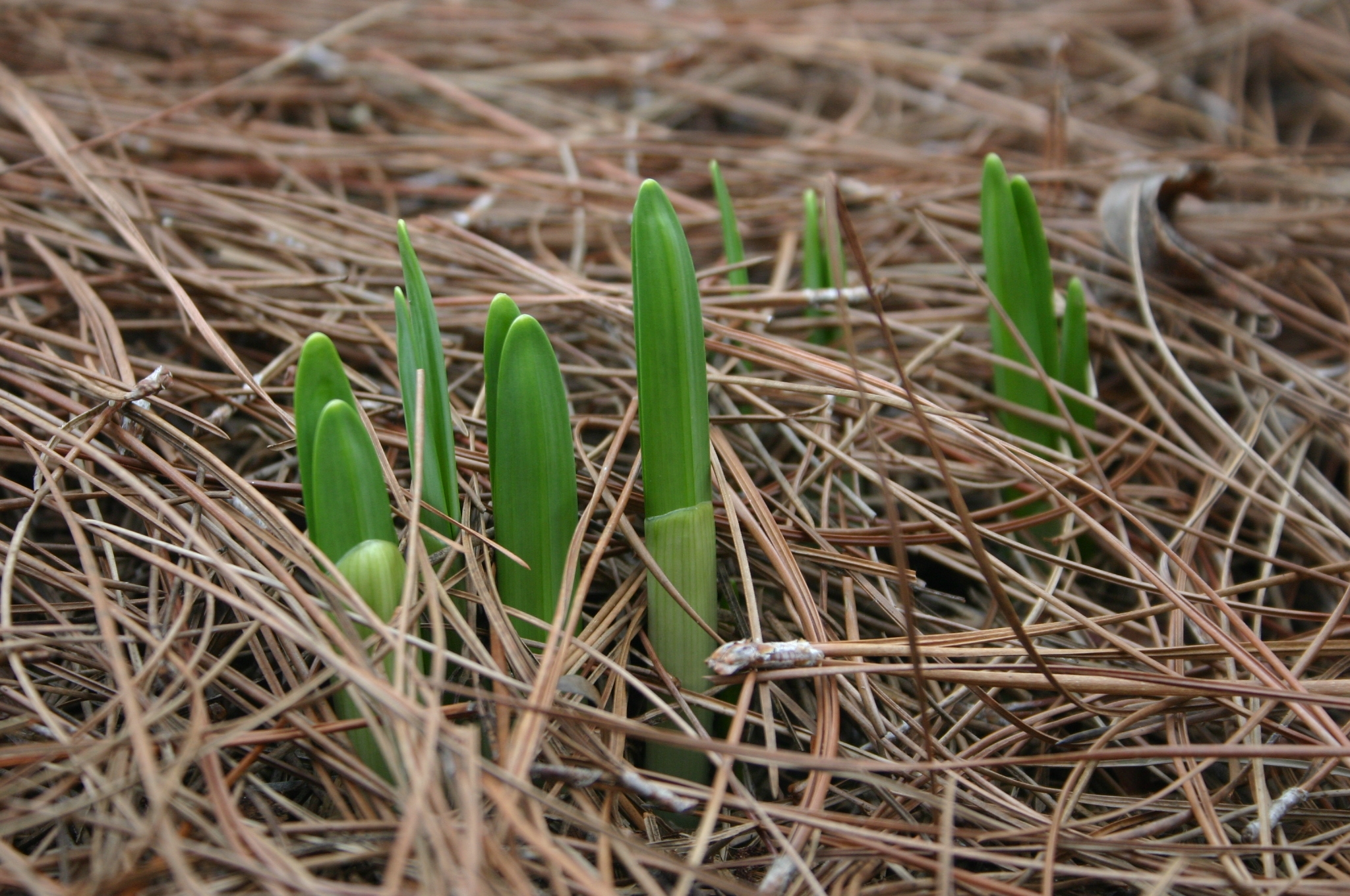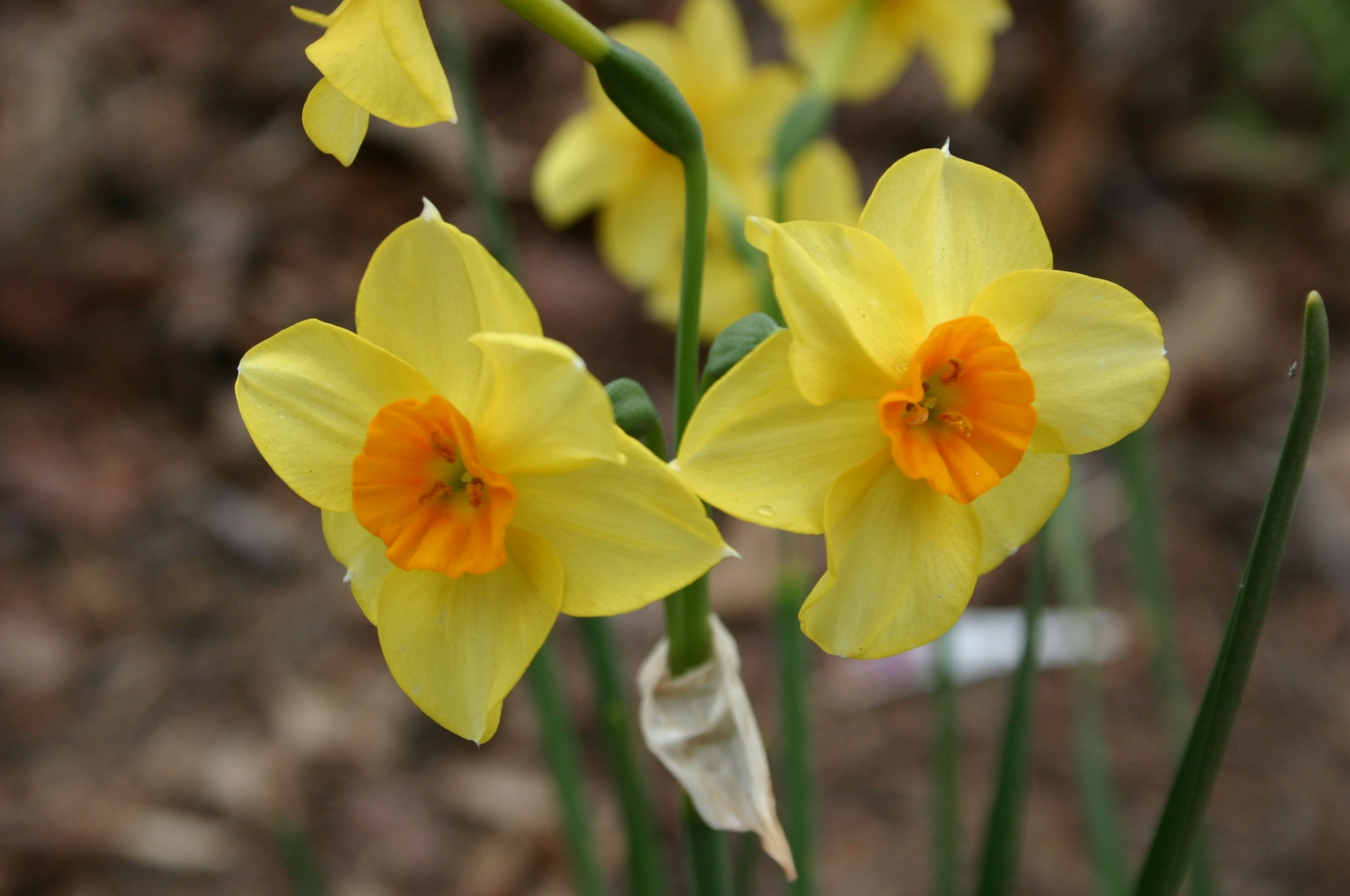Spring Bulbs – When to Fertilize

My rule of thumb for fertilizing any plant is to do it when it is actively growing. Spring-flowering bulbs, like daffodils, tulips and hyacinths fool us though. They seem to be “actively growing” in spring when flowers appear. But the truth of the matter is that the best time to fertilize is when the foliage first emerges in late winter. That’s when the roots and new foliage is actively growing. Spring bulbs aren’t heavy feeders, so they don’t require a lot of fertilizer.
After the plant flowers, the roots decline and can no longer absorb much fertilizer. So any nutrients you add then are pretty much wasted on the plant.
If bulbs have been fertilized in the past, there is often plenty of phosphorus and potassium in the soil. They can get by with a couple of applications of water-soluble fertilizer (Miracle-Gro, Peters, etc). If you think the soil needs phosphorus and potassium, use a complete fertilizer (such as 10-10-10, etc.) at the rate of 1 lbs. per 100 square feet. This would equal 1 rounded teaspoon per square foot.
Lawn fertilizers such as 27-3-3 or 30-3-3 can be used, but cut the rate to .4 pounds per 100 square feet. Also make sure the lawn fertilizer does not contain a weed preventer or weed killer.
An alternative is to use a single fall application of a slow-release fertilizer (Osmocote, Dr. Earth, Milorganite, etc) at planting and each fall thereafter at the normal planting time. Many references suggest using bone meal as a bulb fertilizer; however, research at NC State University has found that the phosphorus from bone meal is released very slowly and does not move through the soil very well.
Remember to leave the foliage until it dies naturally. The energy in the foliage is transferred to the bulb as the foliage dies and will help bloom next year.



















